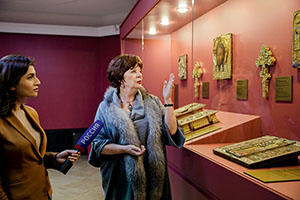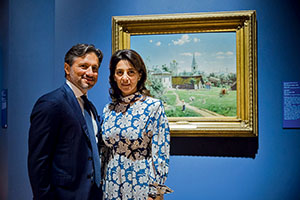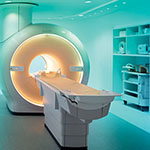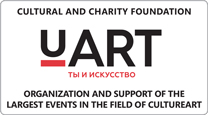Moscow through the Ages
Exhibition devoted to Moscow's 870 th
anniversary
opened in the Tretyakov Gallery
Text: Margarita Chizhmak
Many books are written about Moscow. Thousands of poems and songs are dedicated to the city. Countless images of it can be found in graphic arts and cinematography. The capital has been transforming from one era to another. Like a human being, the city changed its temper and moods with age, however, at all times it maintained its unique atmosphere. Every person, be it a Muscovite or a visitor, had, has and will have his or her own Moscow: favorite places and routes, warm memories and nostalgic feelings.

“Moscow through the Ages”, the Tretyakov Gallery exhibition
dedicated to the 870th anniversary of the founding of the capital, rushes
through quiet streets and crowded boulevards like a speed train or magic time
machine. It peeks in inviting courtyards and lays new avenues with houses that
shine with myriads of windows. Old city mansions, silent witnesses of the lives
of several generations, pompous Stalin's
The opportunity to hear “the voices of the city” which add a soundtrack to the core pieces displayed at the exhibi tion is one of its highlights. The city is the atmosphere where the present extravagantly intertwines with the past. The peal of bells played in old urban monasteries for centuries can be heard amidst the noise of engines and the sounds at construction sites of future buildings of new Moscow.
“Moscow through the Ages” displays more than 90 pieces,
The story of the city begins with the “Moscow is the Third
Rome” section of the exhibition. Pictures of Moscow and its particular
landmarks appear for the first time in the works of Russian artists at the
beginning of the XVI century when the city became the largest political,
economic, religious, and cultural center of Ancient Russia. By that time, a
tradition was set up to speak of Moscow not only as the successor of political
and spiritual traditions of Rome and Byzantine Empire but also the heiress of
their
Praise to the Vladimir Icon of the Mother of God (Tree of the Muscovite State) (1663) by Simon Ushakov became one of the renowned images of medieval Moscow. The Tree in the icon is decorated with beautiful floral elements and grows from the Assumption Cathedral, a place of coronation of all grand princes showing that Moscow was the original capital. Throughout the centuries, the beauty and magnificence of the Moscow Kremlin panorama attracted poets who glorified it in their grandiloquent odes, icon painters, and artists who dedicated series of paintings to it. It is with good reason that the superb complex of cathedrals and churches fenced about with the mighty Kremlin wall is known as the symbol of the city and heart of the capital. F. Alekseyev was one of the first artists who painted the Kremlin view in the most comprehensive manner. The artist not only created some sort of “architectural portraits” of the city but also noted the distinctness of Muscovites’ image at the beginning of the XIX century, characteristics of their everyday life, and whimsical fashion in the form of the blend of Russian and European costumes.
|
The exhibition begins with works by 16th century Russian painters |
Magnificent
The exhibition section called Talking of Old Moscow
will familiarize the modern audience with images of Moscow that are mostly
known from memoirs and classical literature. The city’s nature was always
distinguished by kindness, simplicity, originality, disarming carelessness, and
hospitality. Away from the imperial court and ceremoniousness of the beau
monde, abundance of business offices and departments, Muscovites led a regular,
Moscow Courtyard, the undoubtedly renowned picture painted a century and a half ago, is one of the landmarks of the exhibition. It is hard to imagine that we see one of the lanes of modern noise Arbat considering the quietness of a sunny day and unpretentiousness of the daily routine shown in the painting.
|
Iveta Manasherova and Tamaz Manasherov against V. Polenov’s 1878 painting Moscow Courtyard |
Polenov, the painter from St Petersburg, immediately took a fancy to this simplicity and rhythmicity of life in Moscow. Pleasant walks through old streets and garden squares, diving into the history of the city and enjoyment of slow days filled the artist’s soul with agreeable emotions and motivated him to create a number of pieces full of the fascination for “the poetry of everyday motives.” The city was noisy at multiple flea markets. It is as if the bustling motley crowd in the pictures of V. Makovsky and Ye. Sorokin tells the stories of V. Gilyarovsky, the portrayer of ordinary Moscow life.
Since the dawn of time, Moscow was distinguished by a
patriarchal character of lifestyle and emphasized piety which predetermined the
strict observance of the church calendar. Orthodox fasting days were followed
|
New Moscow by Yuri Pimenov is one of the exhibits |
Beyond a shadow of doubt, the conversation about Old Moscow
exemplified by the Russian pictorial art of the second half of the XIX century
would not be so heartwarming without mentioning of urban landscapes: the
laconic stories about quiet courtyards, deserted streets
In the 1910s, a new “formula of Moscow” was created by
pioneer artists who were looking for other paths in art. In his painting
experiments, A. Lentulov was led by the passion towards the sun and bright
light, the ability to break things down into parts and get them together again.
In Basil the Blessed, the artist does not show the temple, rather paints
an extravagant fantasy on the topic of the unique piece of the world
architecture. The conception and the very soul of the Cathedral
of Intercession of the Virgin are also truly fantastic.
At the beginning of the XX century, Lentulov, using the new
graphic means, continues to develop the thoughts of ancient Russian
architects, and the 3D miracle of the XVI century transforms into the
A. Ekster’s Synthetic City (1914) from the collection of Iveta and Tamaz Manasherovs is also marked with the brightness and specific rhythm of color combinations.
The composition of the painting is based on the futuristic pictorial art principles: the movement is depicted through the layering of sequential phases on one image. Just like in Lentulov’s art, Moscow and its distinctive Bell Tower of Ivan the Great and varicolored domes of St. Basil's Cathedral are a composite of fragments of impressions, “codes,” and archetypes.
Landscape pictures of V. Midler, M. Gurevich, and A. Labas are full of joyful surprise at the city miracles such as the fuss of trams and cars, flights of zeppelins and airplanes, electric lights, and variegation of street signs. The Moscow subway which became operational in spring of 1935 and turned into one of the protagonists in the city space is also shown as the festive marvel. The admiration for the swift movement and power over time presented to humanity by machines runs through the art pieces of that time.
Moscow kept transforming at lightning speed! The city became a capital!

|
The curators' idea was to make little Muscovites familiar with the capital’s history |
Yu. Pimenov’s New Moscow (1937) a true symbol of the new city, actively living and forging the happy future of the Soviet country, is perceived as a “shot” of some romantic motion picture. A. Deyneka’s Builders created in the thaw period if filled with the joy of the capital and life being reborn… Impressive views of the majestic city with quarters crawling to the outskirts and noisy avenues appear in pieces by many Soviet artists. K. Yuon and O. Vukolov show splendorous, partially generalized characters of Moscow where the past, the present, and the future seem to meet.
The voice of a man who is lost in the turmoil of streets
flooded with transport, among the “decorations” of urban architecture, in the
throng of hurrying
|
The exposition was prepared with great love |
Back


















